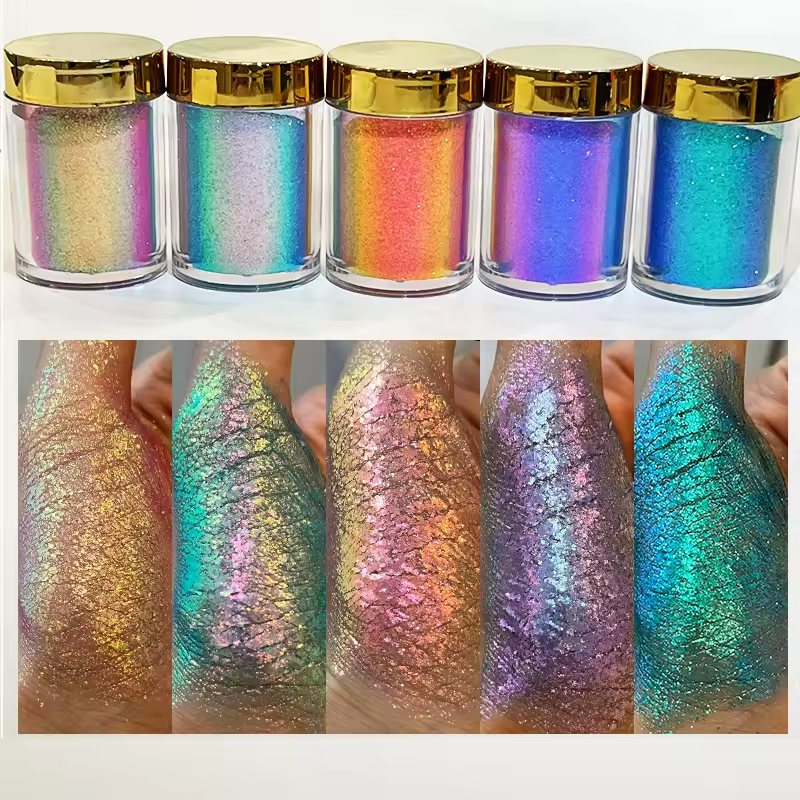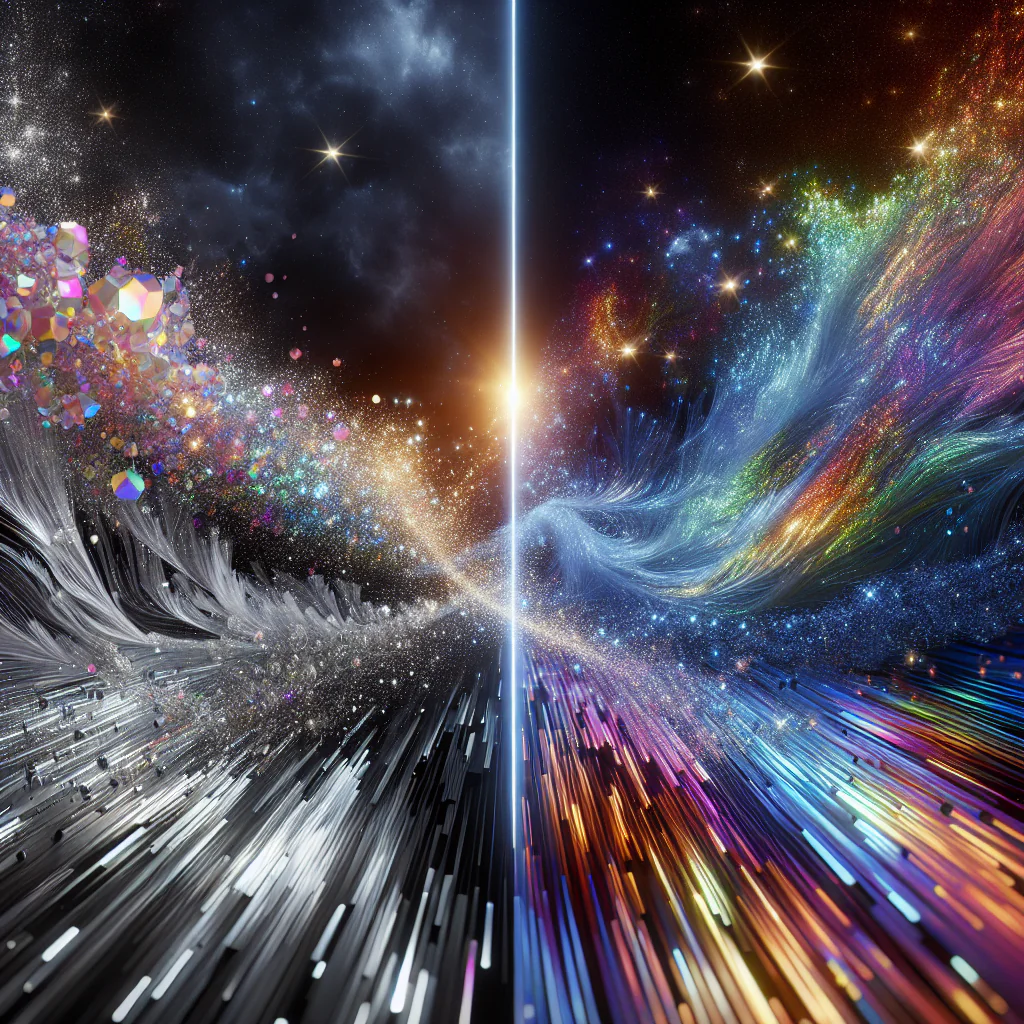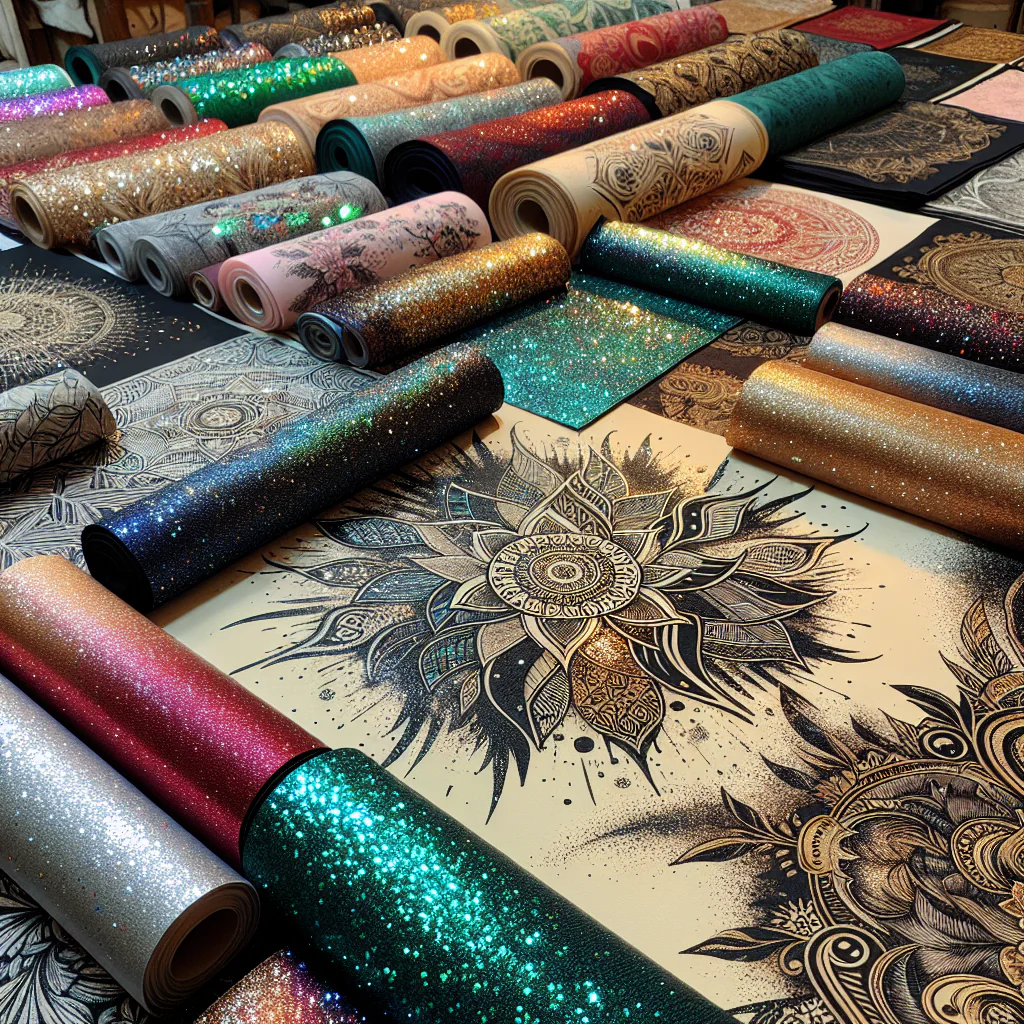-
Table of Contents
“Iridescent Glitter vs. Holographic: Unveiling the Sparkle Spectrum!”
Discover the dazzling differences between iridescent glitter and holographic glitter! Unleash your creativity and elevate your projects with the perfect sparkle. Learn more about their unique characteristics and find your ideal glitter today! [Explore Iridescent Glitter Here](https://www.glittersmall.com/iridescent-glitter/).
Introduction
Iridescent Glitter and holographic glitter are both popular choices in the world of cosmetics, crafts, and design, but they possess distinct characteristics that set them apart. Iridescent Glitter features a color-shifting effect that changes depending on the angle of light, creating a soft, multi-dimensional appearance. In contrast, holographic glitter reflects a spectrum of colors, producing a more vibrant and prismatic effect that resembles a rainbow. Understanding these differences can help individuals choose the right type of glitter for their specific projects, whether for makeup, nail art, or decorative purposes.
Iridescent Glitter: Characteristics and Uses
Iridescent Glitter is a captivating material that has gained popularity in various applications, from cosmetics to crafts. Its unique characteristics set it apart from other types of glitter, making it a favored choice for those seeking to add a touch of shimmer and depth to their projects. One of the most defining features of Iridescent Glitter is its ability to reflect light in a way that creates a spectrum of colors. This phenomenon occurs due to the microscopic layers of material that are coated on the glitter particles, which refract light and produce a rainbow-like effect. As a result, the color of the glitter can change depending on the angle from which it is viewed, creating a dynamic visual experience that is both enchanting and versatile.
In terms of composition, Iridescent Glitter is typically made from a plastic base, often polyethylene terephthalate (PET), which is lightweight and durable. This material allows the glitter to maintain its vibrant appearance over time, resisting fading and wear. Additionally, the iridescent coating is often achieved through a process known as vacuum metallization, where a thin layer of metallic material is applied to the surface of the glitter particles. This not only enhances the reflective quality but also contributes to the overall brilliance of the glitter. Consequently, Iridescent Glitter is not only visually appealing but also practical for a variety of uses.
The applications of Iridescent Glitter are vast and varied, making it a staple in many creative fields. In the realm of cosmetics, for instance, Iridescent Glitter is frequently used in eyeshadows, highlighters, and nail polishes. Its ability to catch and reflect light makes it an ideal choice for products designed to enhance the natural beauty of the skin. When applied to the eyelids or cheekbones, Iridescent Glitter can create a luminous effect that draws attention and adds dimension to makeup looks. Furthermore, its versatility allows it to be blended with other colors, enabling makeup artists to achieve a wide range of effects, from subtle highlights to bold, statement-making designs.
Beyond cosmetics, Iridescent Glitter is also popular in the crafting community. It is commonly used in scrapbooking, card making, and various DIY projects. The shimmering quality of Iridescent Glitter can elevate simple crafts into eye-catching creations, making it a favorite among hobbyists and professionals alike. For instance, when sprinkled on greeting cards or used to embellish handmade decorations, Iridescent Glitter can transform ordinary items into stunning pieces of art. Additionally, its compatibility with various adhesives and surfaces allows for easy application, further enhancing its appeal for crafters.
Moreover, Iridescent Glitter is often employed in the fashion industry, where it can be found in clothing, accessories, and footwear. Designers frequently incorporate this material into their collections to add a touch of glamour and sophistication. The shimmering effect of Iridescent Glitter can elevate a simple garment, making it suitable for both casual and formal occasions. As a result, it has become a popular choice for evening wear and special events, where a little sparkle can go a long way in making a lasting impression.
In conclusion, Iridescent Glitter is a multifaceted material that offers a unique combination of beauty and practicality. Its distinctive light-reflecting properties, durable composition, and wide range of applications make it an essential element in cosmetics, crafts, and fashion. As trends continue to evolve, the allure of Iridescent Glitter remains steadfast, captivating those who seek to add a touch of magic to their creations.
Holographic Glitter: Characteristics and Uses
Holographic glitter is a captivating material that has gained significant popularity in various applications, from cosmetics to crafts. Its unique properties set it apart from traditional glitter, making it a favored choice for those seeking to add a touch of brilliance and depth to their projects. One of the defining characteristics of holographic glitter is its ability to reflect light in a spectrum of colors, creating a mesmerizing effect that changes depending on the angle of view. This optical phenomenon occurs due to the micro-structured surface of the glitter particles, which diffract light, resulting in a rainbow-like display that is both eye-catching and dynamic.
In terms of composition, holographic glitter is typically made from a plastic base, often polyester, which is coated with a holographic film. This film contains microscopic patterns that manipulate light, enhancing the glitter’s reflective qualities. As a result, when light strikes the surface of holographic glitter, it scatters in various directions, producing a vivid array of colors that can shift and change as the observer moves. This characteristic makes holographic glitter particularly appealing for applications where visual impact is paramount, such as in fashion, makeup, and event decorations.
The versatility of holographic glitter extends beyond aesthetics; it is also valued for its durability and ease of use. Unlike traditional glitter, which can easily lose its luster or become dull over time, holographic glitter maintains its vibrant appearance, making it suitable for long-lasting applications. This durability is especially important in cosmetics, where products are often exposed to various environmental factors. Holographic glitter is commonly found in eyeshadows, nail polishes, and body glitters, where it can enhance the overall look by adding dimension and sparkle.
Moreover, the uses of holographic glitter are not limited to the beauty industry. In the realm of arts and crafts, it has become a staple for DIY enthusiasts and professional artists alike. Its ability to create stunning visual effects makes it an ideal choice for scrapbooking, card making, and other creative projects. When applied to surfaces such as paper, fabric, or even resin, holographic glitter can transform ordinary items into extraordinary pieces of art. The interplay of light and color can evoke emotions and draw attention, making it a powerful tool for artistic expression.
In addition to its aesthetic appeal, holographic glitter is also increasingly being utilized in the fashion industry. Designers often incorporate it into clothing, accessories, and footwear to create standout pieces that capture the imagination. The shimmering effect of holographic glitter can elevate a simple garment into a statement piece, making it a popular choice for runway shows and special events. Furthermore, as sustainability becomes a growing concern, many manufacturers are exploring eco-friendly alternatives to traditional glitter, including biodegradable holographic options that maintain the same dazzling effects without harming the environment.
In conclusion, holographic glitter is a multifaceted material that offers a unique combination of visual appeal, durability, and versatility. Its ability to reflect light in a spectrum of colors makes it an attractive choice for a wide range of applications, from cosmetics to fashion and crafts. As the demand for innovative and eye-catching materials continues to rise, holographic glitter is likely to remain a prominent feature in various creative fields, captivating audiences with its enchanting shimmer and dynamic beauty.
Comparing Iridescent and Holographic Glitter: Key Differences
When it comes to the world of decorative materials, particularly in arts and crafts, glitter has long been a favored choice for adding sparkle and visual interest. Among the various types of glitter available, iridescent and holographic glitter stand out due to their unique properties and aesthetic appeal. While both types of glitter can enhance projects with their shimmering qualities, they possess distinct characteristics that set them apart. Understanding these differences is essential for artists, crafters, and anyone looking to incorporate glitter into their work.
Iridescent Glitter is characterized by its ability to reflect light in a way that creates a shifting spectrum of colors. This effect is achieved through the use of special coatings that allow the glitter particles to refract light, resulting in a subtle yet captivating play of colors that can change depending on the angle from which it is viewed. The iridescent effect is often likened to the surface of a soap bubble or the wings of certain butterflies, where a soft, luminous quality is evident. This type of glitter is particularly popular in applications where a delicate, ethereal look is desired, such as in wedding decorations, cosmetics, and fine art projects.
In contrast, holographic glitter offers a more pronounced and vibrant visual effect. It is created using a different manufacturing process that involves the application of a holographic film to the glitter particles. This film contains microscopic patterns that diffract light, producing a rainbow of colors that appear to shift dramatically as the viewer moves. The holographic effect is often more intense than that of Iridescent Glitter, making it a popular choice for bold and eye-catching designs. Holographic glitter is frequently used in fashion, party supplies, and other applications where a striking visual impact is desired.
One of the key differences between iridescent and holographic glitter lies in their texture and appearance. Iridescent Glitter tends to have a more subtle and soft finish, which can create a gentle shimmer that enhances the overall aesthetic without overwhelming it. This quality makes Iridescent Glitter ideal for projects that require a touch of elegance and sophistication. On the other hand, holographic glitter is typically more reflective and can create a dazzling, almost three-dimensional effect. This makes it suitable for projects that aim to capture attention and create a sense of excitement.
Moreover, the application methods for these two types of glitter can also differ. Iridescent Glitter is often used in layers to build depth and complexity, allowing the artist to create nuanced effects. It can be mixed with other materials, such as paints or resins, to achieve a unique finish. Holographic glitter, due to its bold nature, is often used as a focal point in designs, where it can stand out prominently against contrasting backgrounds. This distinction in application can influence the overall outcome of a project, guiding artists in their creative choices.
In conclusion, while both iridescent and holographic glitter serve the purpose of adding sparkle and visual interest to various projects, their differences in appearance, texture, and application methods make them suitable for different artistic endeavors. Understanding these distinctions allows crafters and artists to select the right type of glitter for their specific needs, ultimately enhancing the beauty and impact of their creations. Whether one opts for the subtle elegance of Iridescent Glitter or the bold vibrancy of holographic glitter, both options offer unique opportunities for creativity and expression.
Q&A
1. **What is Iridescent Glitter?**
Iridescent Glitter reflects light in a way that creates a color-shifting effect, displaying different colors depending on the angle of light and viewing.
2. **What is holographic glitter?**
Holographic glitter contains a special coating that creates a rainbow effect, producing a three-dimensional appearance with a spectrum of colors that change with movement and light.
3. **How do iridescent and holographic glitters differ in appearance?**
Iridescent Glitter shows a subtle color shift with a more translucent look, while holographic glitter has a more vibrant, prismatic effect that appears more reflective and sparkly.
Conclusion
Iridescent Glitter reflects light in a way that creates a shifting color effect depending on the angle of view, while holographic glitter features a rainbow-like spectrum that creates a more pronounced, multi-dimensional effect. The key difference lies in their visual properties: Iridescent Glitter offers subtle color changes, whereas holographic glitter provides a more vibrant and dynamic appearance.











